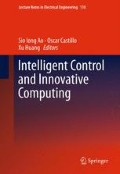Abstract
Sequence mining, a branch of data mining, is recently an important research area, which recognizes subsequences repeated in a temporal database. Fuzzy sequence mining can express the problem as quality form that leads to more desirable results. Sequence mining algorithms focus on the items with support higher than a specified threshold. Considering items with similar mental concepts lead to general and more compact sequences in database which might be indistinguishable in situations where the support of individual items are less than threshold. This paper proposes an algorithm to find sequences with more general concepts by considering mental similarity between items by the use of fuzzy ontology.
Access this chapter
Tax calculation will be finalised at checkout
Purchases are for personal use only
References
Faloutsos C, Ranganathan M, Manolopoulos Y (1994) Fast subsequence matching in time-series database. In: Proceedings of the ACM SIGMOD international conference on management of data, Minneapolis, pp 419–429
LeBaron B, Weigend AS (1998) A bootstrap evaluation of the effect of data splitting on financial time series. IEEE Trans Neural Networks 9(1): 213–220
Rodr’ıguez J Alonso C, B¨ostrom H (2000) Learning first order logic time series classifiers. In: Cussens J, Frisch A (eds) Proceedings of the 10th international workshop on inductive logic programming. Springer, pp 260–275
Agrawal R, Srikant R (1994) Fast algorithms for mining association rules in large databases. In: 20th international conference on very large data bases, Santiago de Chile, pp 487–499
Chang CY, Chen MS, Lee CH (2002) Mining general temporal association rules for items with different exhibition periods. IEEE international conference on data mining, Maebashi City, pp 272–279
Lee CH, Chen MS, Lin CR (2003) Progressive partition miner: an efficient algorithm for mining general temporal association rules. IEEE Trans Knowledge Data Eng 15:1004–1017
Chen G, Wei Q (2002) Fuzzy association rules and the extended mining algorithms. Fuzzy Sets Syst 147:201–228
Agrawal R, Srikant R (1995) Mining sequential patterns. In: Yu PS, Chen ASP (eds) 11th International Conference on Data Engineering (ICDE’95). IEEE Computer Society Press, Taipei, pp 3–14
Agrawal R, Srikant R (1995) Mining sequential patterns: generalizations and performance improvements, Research Report RJ 9994, IBM Almaden Research Center, San Jose, pp 81–93
Srikant R, Agrawal R (1996) Mining sequential patterns: generalizations and performance improvements. In: Proceedings of the 5th international conference on extending database technology, Avignon, pp 327–332
Kuok CM, Fu A, Wong MH (1998) Mining fuzzy association rules in databases, SIGMOD Record 27:41–46
Gholizadeh M, Pedram MM, Shanbehzadeh J Fuzzy sequence mining for similar mental concepts, lecture notes in engineering and computer science. In: Proceedings of the international multiconference of engineers and computer scientists 2011, IMECS 2011, Hong Kong, 16–18 March 2011, pp 362–367
Zaki M (2001) SPADE: an efficient algorithm for mining frequent sequences. Mach Learn J 42(1/2):31–60
Yu C-C, Chen Y-L (2005) Mining sequential patterns from multidimensional sequence data. IEEE Trans Knowledge Data Eng 17(1): 136–140, ISSN 1041–4347
Zhao Q, Bhowmick S (2003) Sequential pattern mining: a survey, Technical report, center for advanced information systems, School of Computer Engineering, Nanyang Technological University, Singapore
Nancy PL, H-J Chen, W-H Hao, H-E Chueh, C-I Chang (2007) Mining negative fuzzy sequential patterns. In: Proceedings of the 7th WSEAS international conference on simulation, modelling and optimization, pp. 111–117
Dong G, Pei j (2007) Sequence data mining. Springer, New York
Jian P (2004) Mining sequential patterns by pattern-growth: the prefixspan approach, IEEE Trans Knowledge Data Eng 16(10):12–22
Hou X, Gu J, Shen X, Yan W (2005) Application of data mining in fault diagnosis based on ontology. In: Third international conference on information technology and applications (ICITA’05), Sydney
Author information
Authors and Affiliations
Corresponding author
Editor information
Editors and Affiliations
Rights and permissions
Copyright information
© 2012 Springer Science+Business Media, LLC
About this chapter
Cite this chapter
Gholizadeh, M., Pedram, M.M., Shanbezadeh, J. (2012). Mining General Fuzzy Sequences Based on Fuzzy Ontology. In: Ao, S., Castillo, O., Huang, X. (eds) Intelligent Control and Innovative Computing. Lecture Notes in Electrical Engineering, vol 110. Springer, New York, NY. https://doi.org/10.1007/978-1-4614-1695-1_20
Download citation
DOI: https://doi.org/10.1007/978-1-4614-1695-1_20
Published:
Publisher Name: Springer, New York, NY
Print ISBN: 978-1-4614-1694-4
Online ISBN: 978-1-4614-1695-1
eBook Packages: EngineeringEngineering (R0)

